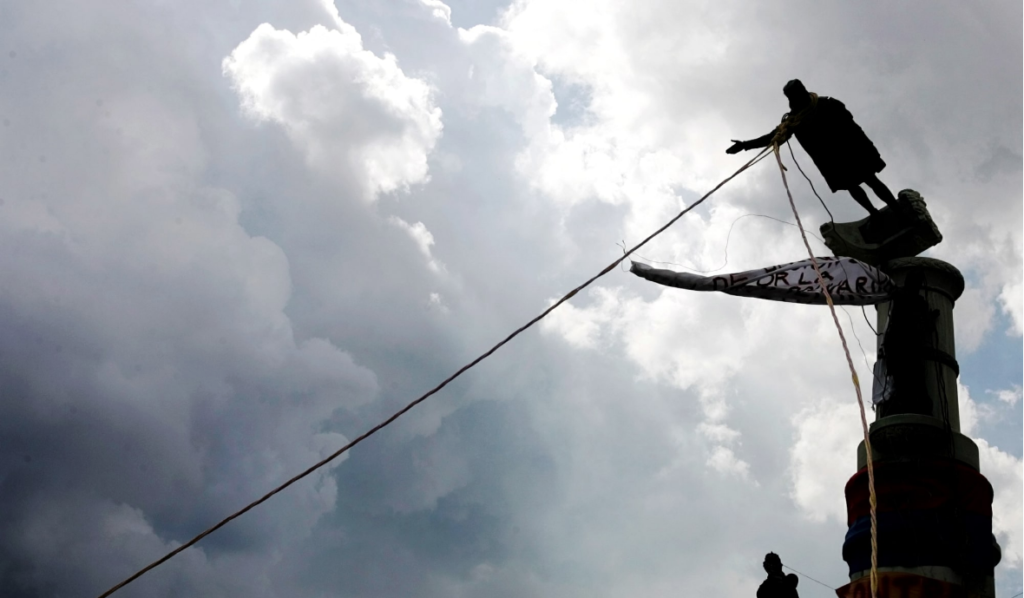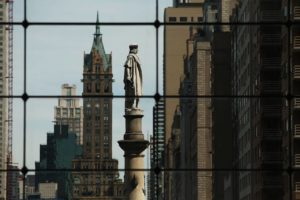The History | The Quest for Identity | Rethinking Columbus Day

Since the 1970s and through the lens of modern revisions of historical events in connection with ethnicity, inequality, racism and human rights, the Columbus archetype has been redefined once more to serve new social dynamics of confrontation and reevaluation (e.g., Native-Americans, Central and South America Indigenous communities). The portrayal of the explorer-hero representing values steeped in discovery and frequently associated with the American adventure is questioned by those who view Christopher Columbus as the colonial instrument of oppression par excellence, inasmuch as his journeys opened the route to transatlantic conquest and colonization, and by extension to the devastation and quasi-extermination of native populations and the slave trade.
Therefore, diverse non-Italian-American associations began lobbying to change “Columbus Day” into “Indigenous People’s Day” as a form of much overdue justice and acknowledgement of past wrongs. Indeed, after years of Native-American activism the city of Santa Cruz, California, and the state of South Dakota, led the way by adopting “Native American Day” in place of Columbus Day (1990), while others opted to add “Indigenous People’s Day” as an alternative celebration during the month of October. Only recently have more cities, states and universities chosen to celebrate Indigenous Peoples Day instead of Columbus Day.
Moreover, in 2017, Columbus’ statue in Central Park was vandalized, forcing the local authorities to increase security surrounding the area in the days prior to and following the Columbus Day parade. Because of the ongoing debate regarding the man himself and the risk of removal due to the controversy surrounding Confederate statues, Andrew Cuomo, Governor of New York, pushed for the Columbus Circle monument to be added to the National Register of Historic Places. This past November, his solicitation was granted and the National Park Service added the 126-year-old, 76-foot tall statue at Columbus Circle to the list of protected landmarks. Cuomo genuinely voiced the spirit of the Italian community when he stated that “the Columbus Monument is a powerful symbol of the Italian-American community and a testament to New York’s role in assimilating immigrants from all over the world in[to] [the] state.” He prided himself in having been able “to secure this designation, which will help ensure the history of all cultures that make up our uniquely diverse state is always recognized.”

As illustrated by Cuomo’s fierce determination to save Columbus Circle, Columbus Day’s significance as the first engineered “Italian-immigrant day” in America is still tightly bound to the heritage and pride of the Italian-American community in the United States, one that although very much assimilated is also exceptionally tied to its roots. To them, although Colonization and its devastating consequences are to be condemned, the figure of Columbus as a mythical embodiment, as an icon, should be preserved in virtue of its universal meaning. Parading on Columbus Day is an honor worth fighting for—one performed to prevent the loss of a Champion who brought about a bounty of unity and agency for his patrons.


